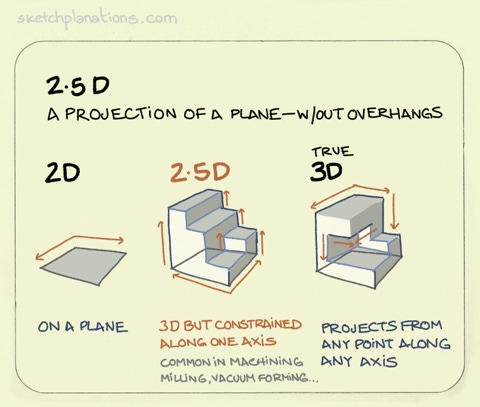2.5D


- Copied!
👇 Get new sketches each week
A 2.5D shape is three-dimensional, but the use of the third dimension, usually height, is limited to simple top-down operations. I learned about 2.5D, or two and a half dimensions, from my engineering days.
It turns out it’s really quite common to make 2.5D things because, for example, it’s easy to drill or mill down into something, and it's a pain to turn something on its side and drill from the other side. Or, as with vacuum forming, it’s easy to suck plastic onto a mold but a pain to get it off if you’ve got any overhangs as you can’t lift it straight up again. Hence, the plastic sandpit in our garden is a 2.5D object rather than true 3D.
As we become more sophisticated at making things, more objects will be true 3D rather than 2.5D. But the simple two-and-a-half-dimensional option is still generally cheaper and easier and will not disappear soon.
Civilization, in general, looks rather 2.5D from the air as we tend to build upwards, but we don’t find overhangs that easy or practical, thanks also to gravity, e.g., the Pyramids.
I recorded a video of the drawing of this sketch. Watch making a sketchplanation—2.5D
Also see:
- Orthographic projection
- Isometric projection
- One-point perspective
- Two-point perspective
- Three-point perspective

